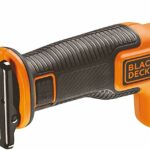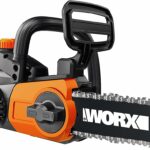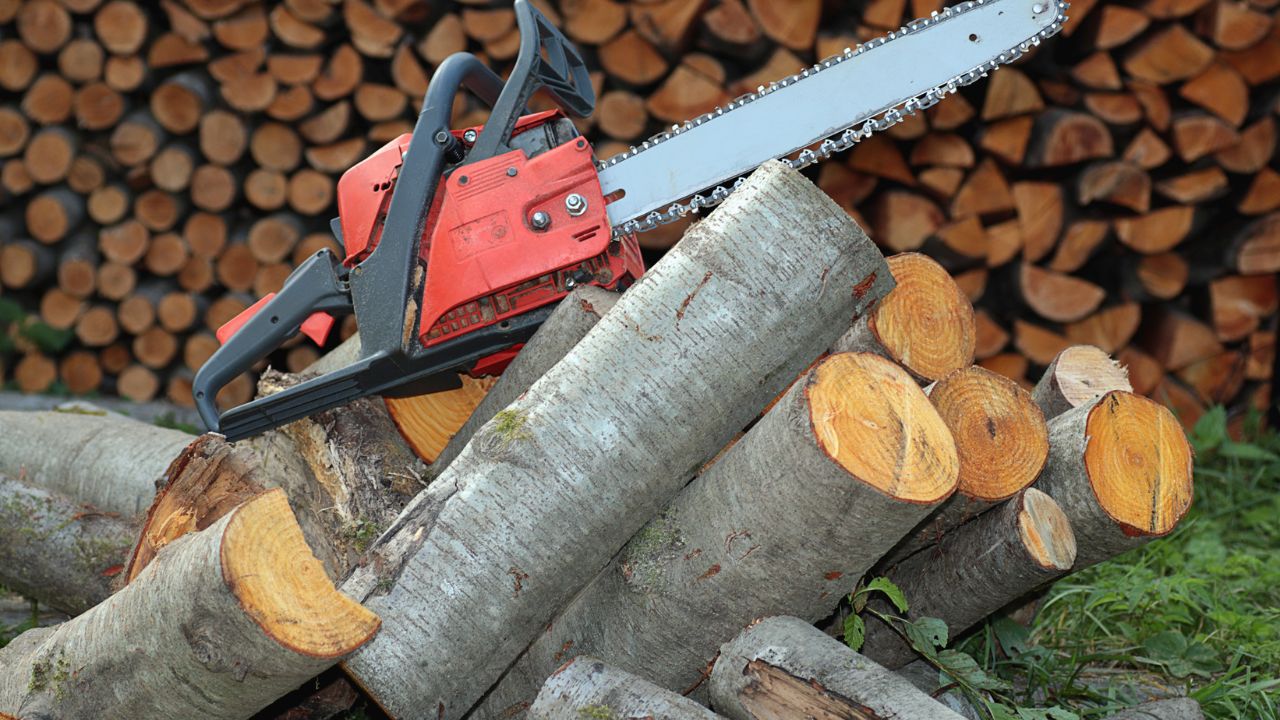Last Updated on November 28, 2023 by Pro Handyman Australia – Editorial Team
Power saws are versatile tools, and each type is designed for specific tasks in woodworking and construction. When exploring different types of saws, a frequently common question among craftsmen is, “can you cut metal with a miter saw?” In the midst of such inquiries, another common comparison emerges: “sabre saw vs jigsaw.” Delving into that, there are essentially three primary categories of power saws: : rotating blade saws, reciprocating blade saws, and circulating blade saws. This article dives into the world of power saws, explaining the distinct types and providing insights into the prominent table saw.
Three Main Categories of Power Saws

Power saws can be broadly classified into:
- Rotating Blade Saws: These saws use circular blades that spin around a central point.
- Reciprocating Blade Saws: In these saws, the blade moves back and forth in a push-pull motion.
- Circulating Blade Saws: These incorporate blades that move in a continuous loop, offering precision.
Diving Deep: The Table Saw
Understanding Table Saws
Table saws are undoubtedly indispensable in any workshop, serving both professional carpenters and enthusiastic DIYers. In the debate of table saw vs miter saw and table saw vs mitre saw vs circular saw, it’s essential to understand that these tools play a pivotal role in numerous woodworking and carpentry tasks. At their core, table saws are straightforward devices, yet their range of table saw uses highlights their adaptability in woodworking. A circular blade, rotating at high velocities, remains fixed, while the user guides the material towards it for cutting. While the tool’s essence remains simple, it offers potential for adaptability, primarily through blade modifications tailored for specific tasks.
Working Mechanism
The core of a table saw is its circular blade mounted on an arbor, which rotates at an incredibly high speed. To achieve the desired cut, the user guides the work-piece against this spinning blade.

Applications of the Table Saw
Table saws find their primary application in the woodworking domain. They’re adept at cutting a range of materials, from wood, plywood, and medium-density fiberboard (MDF) to plastics and softer metals, such as aluminum.
Benefits of Using Table Saws
- The versatility of table saws allows users to make varied cuts with ease, from ripping wide boards and crosscutting to angling cuts with miter gauges.
- Some models provide the flexibility of tilting the blade, enabling beveled cuts.
- Equipped with the appropriate blade, it’s feasible to craft dados using table saws.
Limitations and Safety Concerns
While table saws are invaluable, they come with their set of constraints:
- Their bulk and design render them less portable, often occupying significant workshop space.
- They aren’t the best fit for tasks like miter cuts and resawing.
- Safety remains paramount, as table saws, given their power and mechanism, can be hazardous. Statistics highlight them as among the more perilous tools. It’s essential to adhere to safety protocols and guidelines while operating them to minimize potential risks.
Exploring Circular Saws
Understanding Circular Saws

Circular saws, bearing similarities to table saws, are a staple in both professional settings and DIY workshops. These tools stand out for their versatility and exceptional portability. Primarily designed to cut wood and softer materials, circular saws can essentially be thought of as mobile table saws. However, with the right blade, these saws can also tackle tougher materials like metal. Unlike table saws, the operation of a circular saw involves the opposite principle.
Operational Mechanism
A circular saw is a handheld tool that houses a rotating blade. To execute a cut, the tool is guided across the stationary workpiece, allowing the spinning blade to slice through the material. One might wonder, “what is a cold cut saw?” This is a specific type of circular saw designed to keep the material and the blade relatively cool during the cutting process.
Benefits of Using Circular Saws
- Circular saws boast remarkable versatility, enabling a range of cuts. For those looking into how to cut straight with a circular saw, mastering the techniques and understanding the tool’s capabilities are crucial.
- Their design prioritizes portability, and they occupy minimal storage space.
- They excel at cutting long wood pieces and other materials that may not be feasible on a table saw.
Limitations
When pondering the question if you can put a cold cut blade on an abrasive saw, it’s crucial to consider the nature of the tools involved. As you delve into how to use a circular saw, you’ll recognize its versatility. However, when comparing a cold cut saw vs band saw, one might also consider other options. Circular saws, while versatile, might not provide the utmost precision without the incorporation of guide rails or straight edges.
Diving into Miter Saws
A Closer Look at Miter Saws
Miter saws, while catering to specific tasks, are commonly found in professional workshops. As the name suggests, their primary function is to make miter cuts – angles other than the standard 90-degrees on the length or width of the material. Although they are perfectly capable of executing crosscuts, their specialty lies in angular cuts. This specificity stems from the fact that standard crosscuts can be readily achieved on table saws.
Operational Mechanism
The miter saw features a sizable rotating circular blade, anchored to a swing arm. This blade descends onto the fixed workpiece on the miter saw table to make the cut. The workpiece is firmly pressed against the miter saw fence, ensuring it remains square to the blade.
Applications of Miter Saws
Miter saws are proficient at a range of tasks including crosscuts, miter cuts, bevels, and compound cuts across materials like wood, plastic, and plywood, showcasing the diverse miter saw uses in various carpentry and construction projects.
Their significance is amplified in woodworking and carpentry, particularly for intricate tasks like crafting furniture, cabinets, and frames.
Dual bevel miter saws are highly sought after for specialized tasks such as trimming crown moldings.
Variations in Miter Saws
Miter saws come in an array of designs, from the simplistic basic models to the more advanced compound and sliding compound miter saws. For a deeper understanding of the various miter saw types and their distinct advantages, it’s recommended to delve into specialized miter saw guides.
Delving into Chop Saws
Understanding Chop Saws
Chop saws are specifically designed to tackle hard materials. While they may resemble miter saws in appearance, their functionalities are vastly different. Miter saws predominantly cut through wood, whereas chop saws can handle robust materials such as metal, brick, concrete, and masonry. Given that many DIY enthusiasts don’t frequently engage with such hard materials, chop saws are predominantly found in professional settings. Nevertheless, they do have their place in some home workshops and garages, given their utility.
Operational Mechanism
A chop saw employs an abrasive disc that spins at extremely high speeds on a swing arm. This disc is introduced to the workpiece secured on the table for cutting. The working concept behind a chop saw shares similarities with a miter saw. The notable distinction lies in the cutting tool: chop saws utilize abrasive discs, while miter saws rely on toothed steel blades. A more exhaustive comparison can be sought in specialized guides contrasting miter saws and chop saws.
Applications and Uses
Primarily, chop saws excel at crosscutting hard materials, with metal cutting chop saws being highly regarded in the construction and metalworking sectors. While chop saws are capable of angled cuts, they lack the precision and accuracy offered by miter saws.
The Versatility of Radial Arm Saws
Introduction to Radial Arm Saws
Radial arm saws stand out due to their unique design. Instead of a blade fixed to the table, the blade is mounted on a movable arm. Think of it as an inversion of the traditional table saw setup: the workpiece remains stationary on the table, while the rotating blade, along with its head, traverses in a straight path along the arm.
Primary Function
Radial arm saws aim to offer a multifunctional cutting solution. They’re adept at executing various cuts, from crosscuts and miter cuts to compound cuts.
Historical Context and Modern Preferences
In yesteryears, radial arm saws enjoyed immense popularity. However, they have been predominantly superseded by miter saws. This shift can be attributed to concerns over safety and evolving user preferences. Moreover, the specific need for a bulky radial arm saw, particularly for miter cuts, has dwindled. The rise of sliding compound miter saws has provided a convenient solution for cutting wider workpieces. For extended rip cuts and broad crosscuts, the modern professional typically leans towards the table saw.
Chainsaw Mastery

The Iconic Chainsaw
While many are already acquainted with cordless chainsaws, possibly due to their frequent portrayal in films, a brief overview is still essential. A chainsaw operates using a chain studded with sharp teeth to primarily cut through wood. Although it doesn’t offer precision, its efficiency in swiftly processing vast volumes of wood is unparalleled.
Safety First
Handling a chainsaw requires utmost caution. Before operating, ensure you’re comfortable with its weight and grip. Familiarize yourself with safety guidelines to mitigate any potential hazards.
Diving into Reciprocating Saws
Understanding the Mechanics
Reciprocating saws differ significantly from previously discussed saws. They operate with a blade that extends forward and retracts in quick succession, creating an effective sawing action. This handheld power tool is available in both corded and cordless versions. For a comprehensive guide on purchasing considerations and features, it’s recommended to explore specialized reciprocating saw resources.

Versatile Applications
The reciprocating saw is famed for tasks such as tree pruning, wood cutting, and even cutting through bricks and tiles, particularly shining in demolition and remodeling contexts. This tool, often referred to as a Sawzall, proves indispensable for tasks like drywall replacement, door and window installations, PVC pipe cutting, and even removing floor tiles. One of the critical distinctions in the reciprocating saw vs jigsaw debate is the former’s adaptability; by simply switching out the blade, users can adapt the saw to cut through a multitude of materials, including tougher ones like bricks and tiles, a versatility that is somewhat limited in jigsaws.
Jigsaw Intricacies
How Jigsaws Stand Out

At a glance, jigsaws might resemble reciprocating saws. However, there are crucial differences: a jigsaw blade is oriented downward, and the tool’s primary design is for making intricate, curved cuts. When juxtaposed with reciprocating saws, jigsaws emerge as a more precise tool and hold the unique distinction of being the sole handheld power saw tailored for curved cuts.
Expanding the Jigsaw’s Horizon
Jigsaws boast versatility and demonstrate their capability of producing both straight and curved cuts on a variety of materials such as wood, metal, granite, tiles, and plastic. A quintessential household application, especially when contrasting jigsaw vs circular saw, involves using the jigsaw for countertop installations, showcasing its precision and adaptability. Another distinctive feature of the jigsaw is its ability to create internal profiles; by initiating a cut with a drilled hole, it becomes feasible to craft straight, angled, or curved shapes with finesse, a technique often highlighted in the jigsaw vs circular saw discussions for its specialized application.
Exploring Band Saws
Introduction to Band Saws
What is a band saw? Band saws harness the power of a continuously rotating metal band, looped around two wheels, to execute cuts. These saws shine particularly when working with tubes, piping, and curved objects. Though their functionality parallels that of jigsaws, they pack a more robust punch. Users have the choice between two primary models: vertical and horizontal. While stationary band saws are heftier and fixed in place, their portable counterparts are compact and mobile.
Mechanics of a Band Saw
A band saw operates using a blade, which is essentially a continuous metal band outfitted with teeth on one edge, mounted between two rotating wheels. In the case of a vertical band saw, the user feeds the workpiece against this spinning blade. The horizontal variant, meanwhile, employs a swing arm that lowers the rotating blade onto the workpiece for the desired cut.
Applications of Band Saws
Vertical band saws have carved a niche in the woodworking realm. Whether you’re slicing through lengthy lumber, executing crosscuts to dimension boards, or aiming for miter cuts with a miter gauge, this saw has got you covered. Notably, it stands as the tool of choice for resawing tasks. Horizontal band saws, predominantly used in metalworking, are making strides in replacing power hacksaws due to their rapid operation and enhanced productivity.
The Intricacies of Scroll Saws
Defining Scroll Saws
When considering scroll saw vs band saw, it’s important to note that scroll saws, similar to band saws, employ two wheels to maneuver a continuous metal strip. Renowned for their precision, these compact power tools excel at meticulously cutting intricate shapes and patterns, a feature that often comes into play in the ‘scroll saw vs band saw’ debate for craftsmen focusing on detail.
Determining the Need for a Scroll Saw
A scroll saw’s forte is its unparalleled precision in crafting complex patterns and designs. Its sharp corners are so meticulously crafted that even dovetail cuts are within reach. However, it has constraints when it comes to the thickness of materials, typically maxing out at around 2 inches. Conversely, a band saw has the capacity to handle much thicker materials, rendering it the preferred tool for resawing tasks. When considering material removal rates, band saws are faster, but for sheer precision, scroll saws remain unmatched.
Scroll Saw Applications
For those delving into pattern crafting, intarsia creation, jigsaw puzzle design, sign lettering, marquetry, template making, or wooden toy production, understanding scroll saw uses becomes essential, as this tool is an invaluable asset. Its versatile applications extend to a myriad of crafts and intricate woodworking projects, showcasing the scroll saw’s importance in achieving precision and artistic detail.
Delving into Panel Saws
Understanding the Basics of Panel Saws
Panel saws are uniquely designed to segment larger panels into smaller, more manageable sections. At their core, panel saws resemble expansive table saws. But the distinction lies in their operation: in panel saws, the blade traverses across the table guided by a track, drawing some similarities with track saws. Yet, their end-goals vary considerably.
Functionality of Panel Saws
Panel saws are champions at splitting vast wooden boards or other sheet materials into more manageable rectangular shapes. Their versatility extends to cutting a spectrum of materials such as wood, plywood, Oriented Strand Board (OSB), MDF, laminated layers, and acrylic sheets. Moreover, by switching out the blade, one can also adeptly slice through aluminum and plastic sheets. These saws find their homes primarily in cabinet-making establishments, aiding in transforming large panels into smaller boards with precision.
Panel Saw Varieties
The design spectrum for panel saws bifurcates into two principal categories: horizontal and vertical. Horizontal panel saws, which mirror the appearance of colossal table saws, claim a generous footprint. In contrast, vertical panel saws, with their compactness, are often the favorite owing to their space efficiency.
Comparing Panel Saws with Contemporaries
Panel saws’ main competitors in the saw domain are the table saw and track saw. Distinguishing these, regular table saws are engineered for small to medium-sized wood pieces. Maneuvering large wood panels for cutting proves cumbersome with standard table saws, an obstacle panel saws overcome with aplomb. Notably, vertical panel saws are spatially conservative compared to their table and track counterparts. Yet, panel saws have their limitations – they falter with angular cuts and aren’t optimal for slicing narrow-width boards. In essence, while panel saws won’t usurp the role of your table saw, they shine when large sheet segmentation is in order.
Unraveling Rip Saws
Defining Rip Saws in the Power Saw Landscape
The realm of rip saws can sometimes be muddled, as the term often gets interchanged with hand-saws or any power saw capable of a rip cut. For clarity, let’s focus on the power saw context. Rip saws, in essence, are crafted to execute rip cuts – cuts that align parallel to the wood grain.
The Broad Category of Rip Saws
While the rip saw classification envelops some previously discussed saw types like circular saws and table saws, there exist specialized machines laser-focused on straight-line rip cuts. These heavy-duty saws are efficient lumber slicers, maximizing productivity. Historically, Diehl Machines pioneered the development of the straight-line rip saw.
Deciding on a Straight-Line Rip Saw
For the majority of woodworkers and carpenters, a conventional table saw coupled with a feeder suffices. But for those who tread in the high-volume manufacturing landscape, a dedicated straight-line ripping saw becomes indispensable. If you’re crafting in excess of a hundred cabinet doors weekly, investing in one of these dedicated machines proves cost-effective in the long haul.
Diving Deep into Track Saws
Understanding the Mechanics of Track Saws
Track saws can be visualized as enhanced versions of circular saws, augmented with a metal track. This track is ingeniously designed to amplify the saw’s precision and stability during operation.
Operational Dynamics of Track Saws
To utilize a track saw, particularly in the context of track saw vs table saw comparisons, one fastens the metal track onto the intended workpiece or sheet. Following this, the circular saw blade is plunged into the material, and by pushing forward, the desired cut is achieved. Such saws are sometimes recognized by another name: plunge-cut saws. A noteworthy feature is the riving knife located behind the blade, which plays a crucial role in eradicating kickbacks, ensuring a seamless cut.
Making a Case for Plunge-Cut Track Saws
If you find yourself contemplating the value of a track saw versus a traditional circular saw, consider the following benefits:
- Track saws surpass mere straight edges by offering no sideways deviations; their movement is solely restricted to the forward or backward direction along the track, guaranteeing impeccably straight cuts.
- They can efficiently handle broader boards that might challenge standard table saws. For instance, when tasked with slicing a 4×8-inch plywood sheet, the track saw emerges as a formidable choice.
- These saws excel at extensive miter cuts, which might stretch the capabilities of sliding compound miter saws or even table saws.
- Many times, there’s no need for clamps with plunge-cut saws. The rubber grips situated beneath the tracks anchor them in place, facilitating easy cuts on most softwoods.
- A distinctive advantage is the ability to finely tune the depth of the cut.
- Portability is another feather in their cap when juxtaposed with table saws.
However, there are limitations to track saws:
- The workpiece must possess adequate rigidity to bear the weight of the track.
- While they can achieve straight cuts, table saws offer superior precision in regulating the distance from an edge.
- They aren’t suitable for milling tasks, such as producing dados or rabbets.
An Introduction to Tile Saws
Tile Saws: The Specialist for Hard Materials

As one can infer from the name, tile saws are tailor-made for slicing through robust tiles. Their prowess encompasses a spectrum: ceramic tiles, glass tiles, granites, stones, marbles, and porcelain tiles.
Standard circular or table saws falter when confronted with the hardness and brittleness of tiles. Recognizing this challenge, tile saws are outfitted with unique diamond blades, granting them the requisite cutting potency to tackle such hard materials.
Differing based on the nature of cuts, there exist wet tile saws and dry cutting saws. A salient advantage of wet tile saws lies in their cooling ability; they prevent both the blade and the workpiece from overheating, ensuring a pristine cut.
Exploring the Utility of Flooring Saws
A Unique Tool for Specialized Tasks
Flooring saws might not be commonplace, but their efficacy cannot be undermined, especially when it comes to specialized tasks such as cutting flooring materials. These saws stand out due to their compact design, which renders them ideal for use in confined spaces. Operating a flooring saw is straightforward: position the metal table on the floor, place the wood atop it, and seamlessly glide the blade through the wood.
Applications of Flooring Saws
Primarily, flooring saws have carved a niche for themselves amongst professionals deeply engaged in laminated flooring tasks. However, for DIY aficionados embarking on home renovation ventures, a jigsaw could potentially fulfill most requirements. One of the pivotal strengths of a flooring saw lies in its capability to execute rip cuts, miter cuts, and crosscuts with relative ease. Add to that their portability, and it becomes evident why they are the preferred choice for many building contractors and seasoned professionals.
User Experience with Power Saws
Power saws come in a variety of brands and models, suitable for a range of tasks from cutting timber to learning how to drill a hole in glass with precision. But nothing beats the real-world insights from those who’ve used them. Here’s what some of our community members have said about their hands-on experiences:

Valerie from Seattle shares about the BLACKDECKER 18V Lithium Ion Reciprocating Saw, “I recently used the BLACKDECKER 18V Lithium Ion Reciprocating Saw on a home renovation project. It was a game-changer. The power was consistent, and the cuts were incredibly smooth. I’ve used other brands before, but the XL300’s precision really stood out.”

Melanie, a professional carpenter, states, “I got my hands on the WORX 20V Cordless Chainsaw last month. The grip feels secure, and the power delivery is just unmatched. It cut through dense oak as if it was butter. Highly recommend!”
It’s clear that hands-on experiences vary depending on the model and the brand. However, these personal stories provide invaluable insights for potential buyers.
Comparisons Between Top Power Saws
When it comes to power saws, there’s no one-size-fits-all. By comparing some of the top models, you can determine which might be the best fit for your needs. Below is a table comparing three fictitious popular models:
| Model | Power (Watts) | Lifespan (Years) | Price ($) |
|---|---|---|---|
| BLACKDECKER 18V Lithium Ion Reciprocating Saw | 1,500 | 10 | 250 |
| WORX 20V Cordless Chainsaw | 1,350 | 9 | 230 |
| GMC 336282 | 1,400 | 8 | 210 |
From the table, it’s evident that while the BLACKDECKER 18V Lithium Ion Reciprocating Saw boasts the highest power, the WORX 20V Cordless Chainsaw offers a better balance between lifespan and price. Meanwhile, the GMC 336282 is a more budget-friendly option, but with slightly less power and longevity.
Wrapping It Up
Navigating the intricate realm of power saws might seem daunting, but this guide aims to simplify and provide a foundational understanding of the diverse range of power saws available. Each saw type has its unique features and functions. For those in Sydney who might need hands-on assistance or guidance, reaching out to Sydney handyman services can be invaluable. For a more in-depth exploration, including understanding the importance of sawdust recycling, resources with comprehensive details on each kind of saw are available. Once you identify the saw that aligns with your requirements, delve deeper into guides specific to that saw, which also cover aspects like sawdust recycling, to ensure you’re well-equipped to make an informed decision when purchasing a new power saw.
